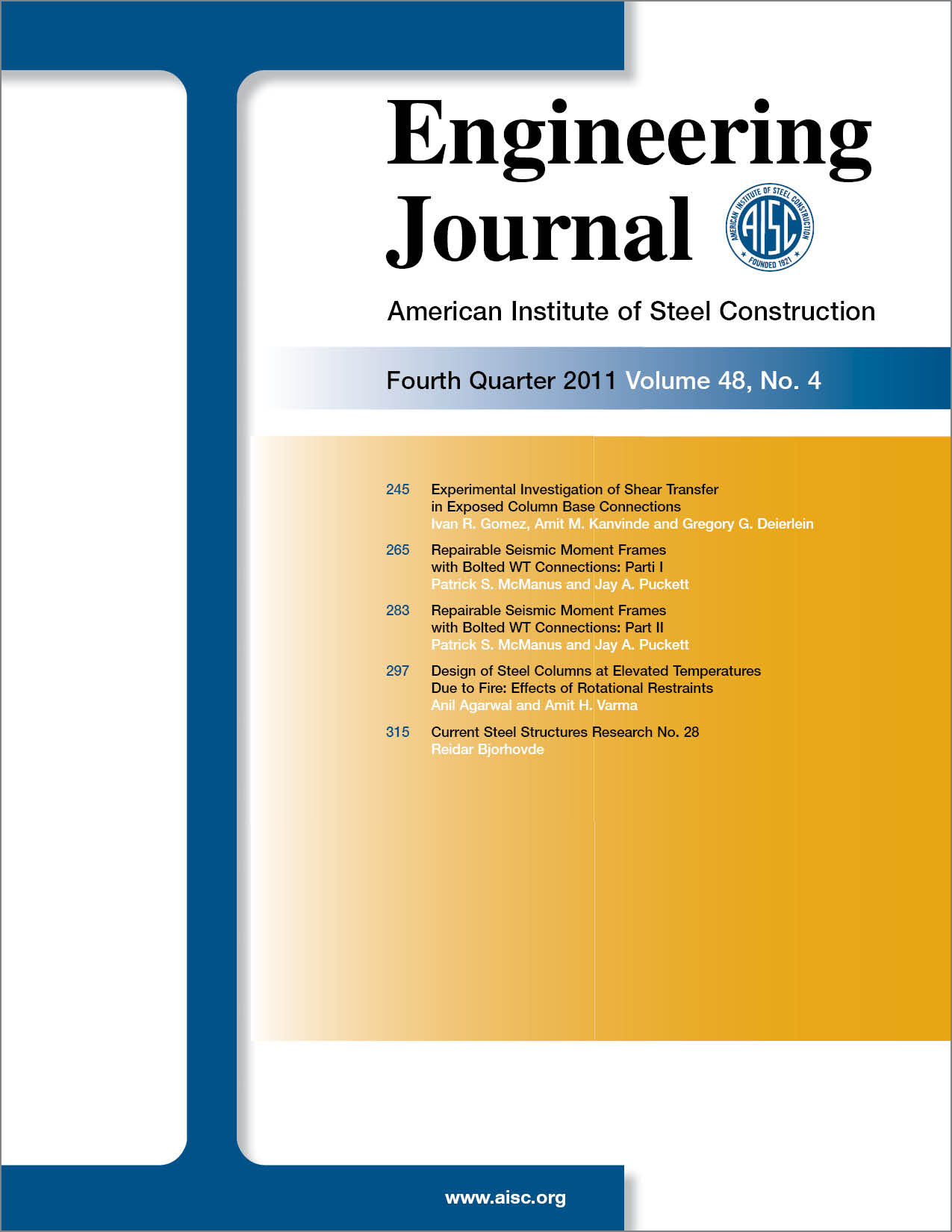Experimental Investigation of Shear Transfer in Exposed Column Base Connections
DOI:
https://doi.org/10.62913/engj.v48i4.1021Keywords:
base plates, anchor rods, column base connections, shear key, shear transferAbstract
Shear transfer mechanisms in exposed column base plate connections are examined through a series of seven full-scale tests. Three mechanisms of shear transfer are investigated, including friction between the base plate and grout support, anchor rod flexure and shear, and shear key (shear lug) bearing. Seven tests were conducted on relatively large-scale specimens that reflect the common base connection configurations as described in the American Institute of Steel Construction's (AISC) Steel Design Guide 1: Base Plate and Anchor Rod Design. A coefficient of friction equal to 0.46 was measured from three tests investigating friction transfer mechanisms between the steel base plate and grout pad, which is comparable to the design value (0.40) specified by the American Concrete Institute for friction between as-rolled steel and concrete. Two tests investigating anchor rod bearing provided data to evaluate the shear resistance provided by a combination of axial tension, shear and flexure, wherein the anchor rods bend in reverse curvature over a distance roughly equal to the base plate thickness plus one-half of the thickness of the welded plate washer. This strength capacity prediction is consistent with a method outlined by the AISC Steel Design Guide 1. Failure of the concrete footing due to edge breakout was investigated as a limit state for shear lug bearing. Data from two tests indicate that for large footings, the current AISC Steel Design Guide 1 procedures, adapted from the American Concrete Institute, may be unconservative due to the size effect in concrete, which reduces the available shear capacity for larger structure geometries. A method that incorporates the size effect is shown to provide a more accurate assessment of the free-edge breakout strength of the concrete. Limitations of the study and future areas of work are outlined.

